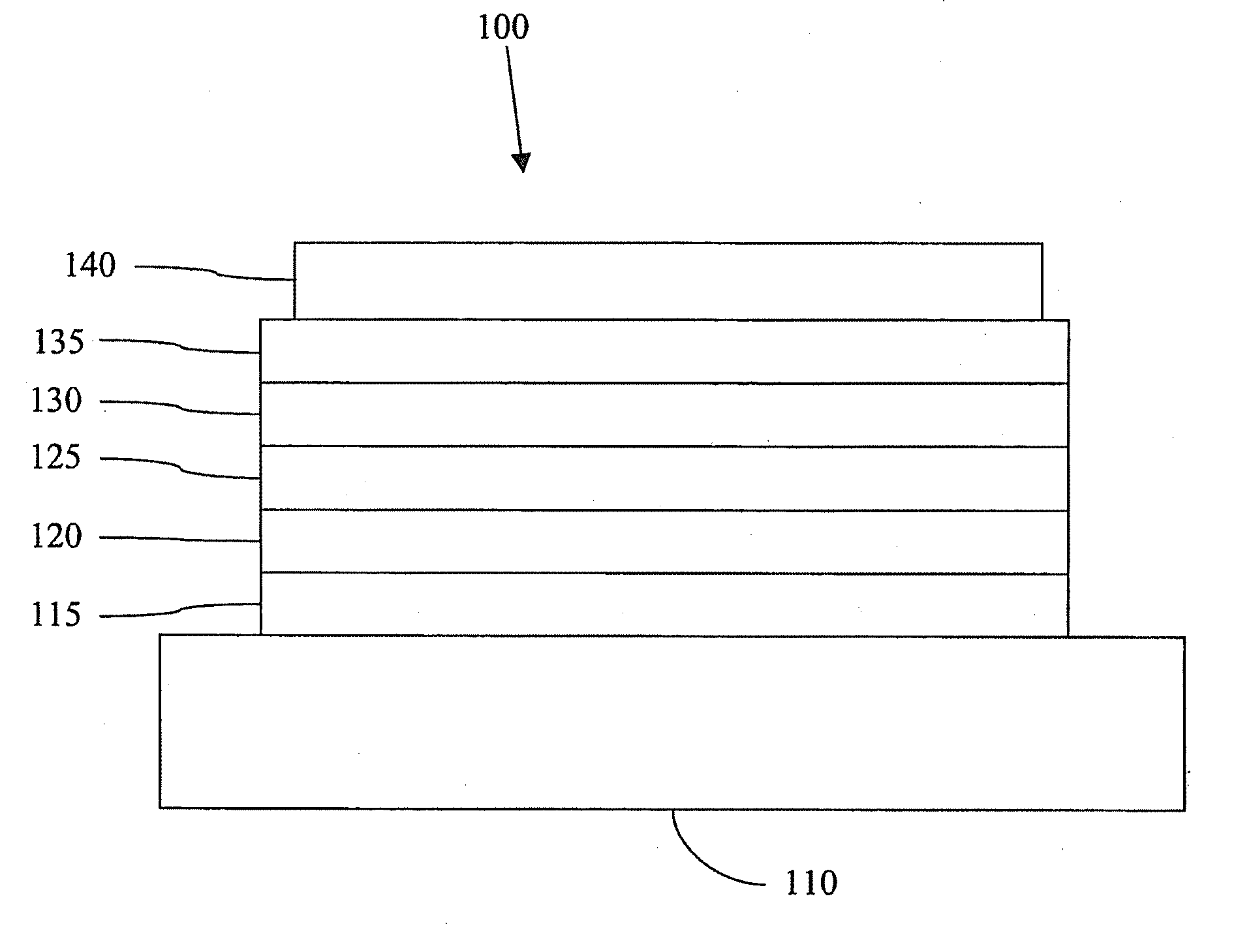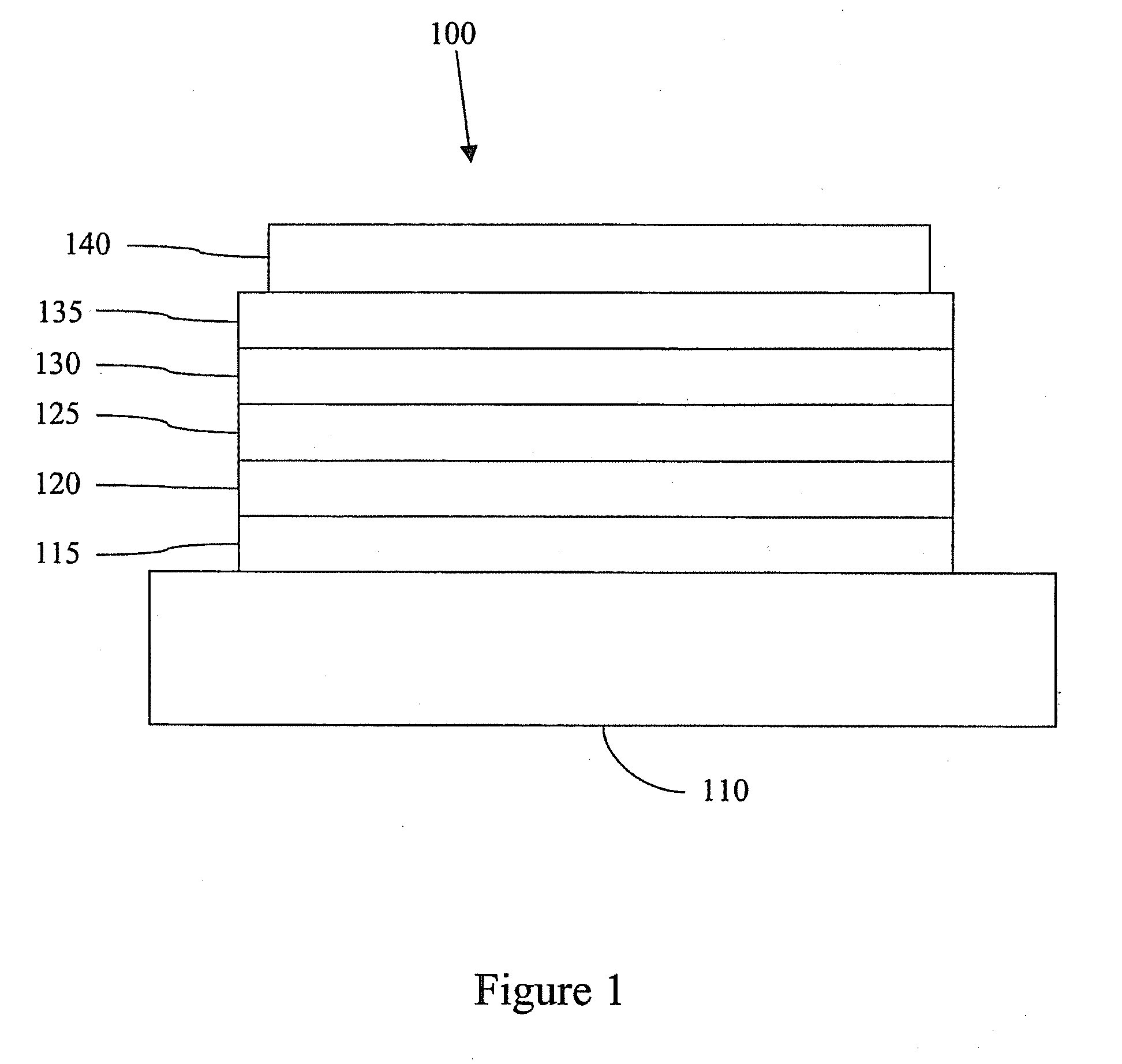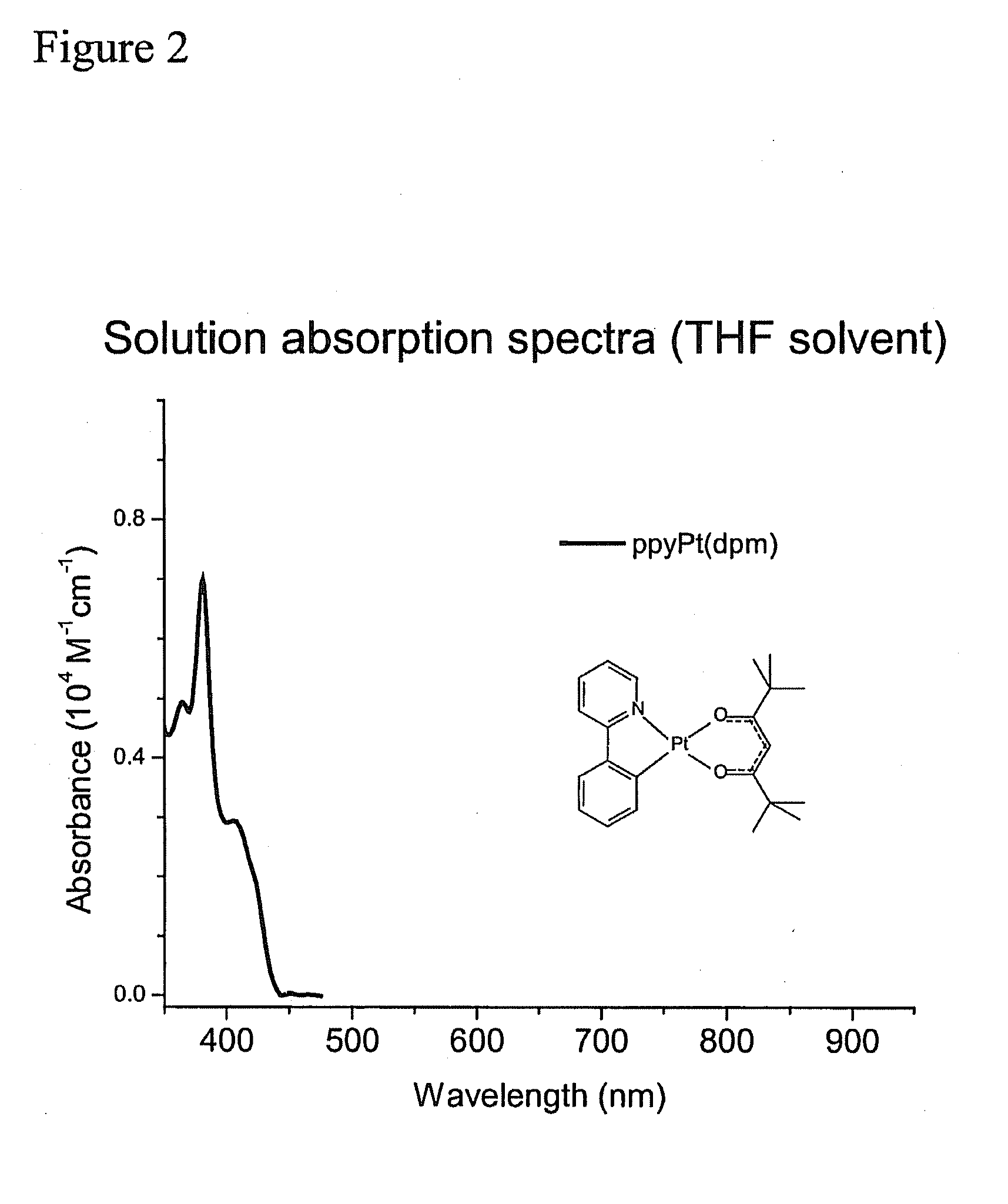Organic photosensitive devices
a photosensitive device and organic technology, applied in the direction of thermoelectric devices, organic chemistry, indium organic compounds, etc., can solve the problems of inability to exceed the product maximum total power generated by the device, difficult and expensive production, and inability to efficiently crystalline devices, etc., to achieve improved photovoltaic performance, improve the absorption of incident radiation, and improve the effect of external quantum efficiency
- Summary
- Abstract
- Description
- Claims
- Application Information
AI Technical Summary
Benefits of technology
Problems solved by technology
Method used
Image
Examples
example 1
Synthesis of 2-phenylpyridines
[0112]The donor-acceptor 2-phenylpyridine ligands precursor were prepared by Suzuki coupling of either 3- or 4-dimethylaminophenylboronic acid (Frontier Chemical) with either 2-bromo-4-nitropyridine or 2-bromo-5-nitropyridine (Aldrich) in 1,2-dimethoxyethane using a Pd(OAc)2 / PPh3 catalyst and K2CO3 base as described in Synlett, 1999, 1, 45-48.
[0113](A): 4′-N(CH3)2ph-5-NO2pyr, 2-(4′-dimethylaminophenyl)-5-nitropyridine. 1H NMR (250 MHz, CDCl3), ppm: 9.38 (dd, 1H, J=2.7, 0.7 Hz), 8.38 (dd, 1H, J=9.2, 2.7 Hz), 8.01 (ddd, 2H, J=9.2, 3.1, 2.0 Hz), 7.73 (dd, 1H, J=9.2, 0.7 Hz), 6.76 (ddd, 2H, J=8.9, 3.1, 2.0 Hz), 3.06 (s, 6H). Anal. for C13H13N3O2: found C, 58.54; H, 4.71; N, 14.28. calcd C, 64.19; H, 5.39; N, 17.27.
[0114](B): 4′-N(CH3)2ph-4-NO2pyr, 2-(4′-dimethylaminophenyl)-4-nitropyridine. 1H NMR (250 MHz, CDCl3), ppm: 8.82 (dd, 1H, J=5.4, 0.7 Hz), 8.31 (dd, 1H, J=2.1, 0.7 Hz), 7.98 (ddd, 2H, J=9.2, 3.1, 2.0 Hz), 7.73 (dd, 1H, J=5.4, 2.1 Hz), 6.78 (ddd, 2H...
example 2
Synthesis of [(donor-acceptor 2-(phenyl)pyridinato-N,C2′)2PtCl]2 Complexes
[0117]All procedures involving K2PtCl4 or any other Pt(II) species were carried out in inert gas atmosphere in spite of the air stability of the compounds, the main concern being their oxidative stability and stability of intermediate complexes at high temperatures used in the reactions. The donor-acceptor cyclometallated Pt(II) μ-dichloro bridged dimers of a general formula (C{circle around ( )}N)Pt(μ-Cl)2Pt(C{circle around ( )}N) were synthesized by heating a mixture of K2PtCl4 with 2-2.5 equivalents of donor-acceptor 2-phenylpyridine in a 3:1 mixture of 2-ethoxyethanol (Aldrich) and water to 80° C. for 16 hours. The product was isolated by addition of water followed by filtration and methanol wash.
example 3
General Synthesis of Platinum(II) (donor-acceptor 2-(phenyl)pyridinato-N,C2′)(2,2,6,6-tetramethyl-3,5-heptanedionato-O,O) Complexes
[0118]The [(donor-acceptor 2-(phenyl)pyridinato-N,C2′)PtCl]2 complexes were treated with 3 eq of 2,2,6,6-tetramethyl-3,5-heptanedione (dpmH) and 10 eq of Na2CO3 in 2-ethoxyethanol at 80° C. under inert gas atmosphere for 16 hours. After cooling to room temperature, the solvent was removed under reduced pressure and the crude product was washed with methanol. The crude product was flash chromatographed on a silica column with dichloromethane to yield ca. 25-35% of the pure. (C{circle around ( )}N)Pt(dpm) after solvent evaporation and drying.
[0119][Pt(A)]: (4′-N(CH3)2ph-5-NO2pyr)Pt(dpm), platinum(II) (2-(4′-dimethylaminophenyl)-5-nitropyridinato-N,C2′)(2,2,6,6-tetramethyl-3,5-heptanedionato-O,O). 1H NMR (250 MHz, CDCl3), ppm: 9.78 (d, 1H, J=2.4 Hz), 8.30 (dd, 1H, J=9.2, 2.4 Hz), 7.34 (dd, 2H, J=8.9, 2.4 Hz), 6.94 (d, 1H, J=2.7 Hz), 6.49 (dd, 1H, J=8.9, 2.7...
PUM
| Property | Measurement | Unit |
|---|---|---|
| photogenerated current | aaaaa | aaaaa |
| organic | aaaaa | aaaaa |
| optical | aaaaa | aaaaa |
Abstract
Description
Claims
Application Information
 Login to View More
Login to View More - R&D
- Intellectual Property
- Life Sciences
- Materials
- Tech Scout
- Unparalleled Data Quality
- Higher Quality Content
- 60% Fewer Hallucinations
Browse by: Latest US Patents, China's latest patents, Technical Efficacy Thesaurus, Application Domain, Technology Topic, Popular Technical Reports.
© 2025 PatSnap. All rights reserved.Legal|Privacy policy|Modern Slavery Act Transparency Statement|Sitemap|About US| Contact US: help@patsnap.com



